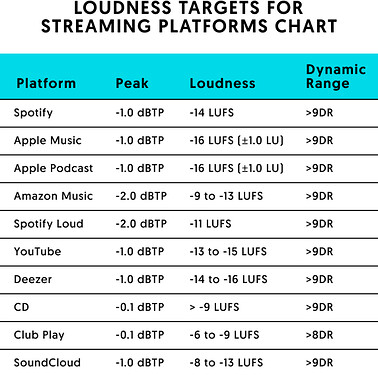According to their own website you’re right and it’s -14 LUFS. So all the LUFS tables seem to be not always right. Here’s another one with a few more values:
Sounds like you’ve got some issues in terms of mastering. What kind of music do you procuce? Do you use a maximizer? Back in the days I had the same problem and my music was quite soft in comparison with professional productions. So I learned how to master properly. I think the key for some more loudness is to use a maximizer and push the volume below the threshold. Of course the mix needs to be quite right, too. If you don’t have any experience how to I would recommend to have a look at the mixing thread. Get rid of the dirt (unnecessary low frequencies), check the frequency spectrum and then do your master. If you do so you could ignore the LUFS in terms of Soundcloud. I never checked the LUFS in the past and I never had problems in terms of loudness, regardless of the platform (Soundcloud, Youtube, whatever).
It’s free. ![]()
